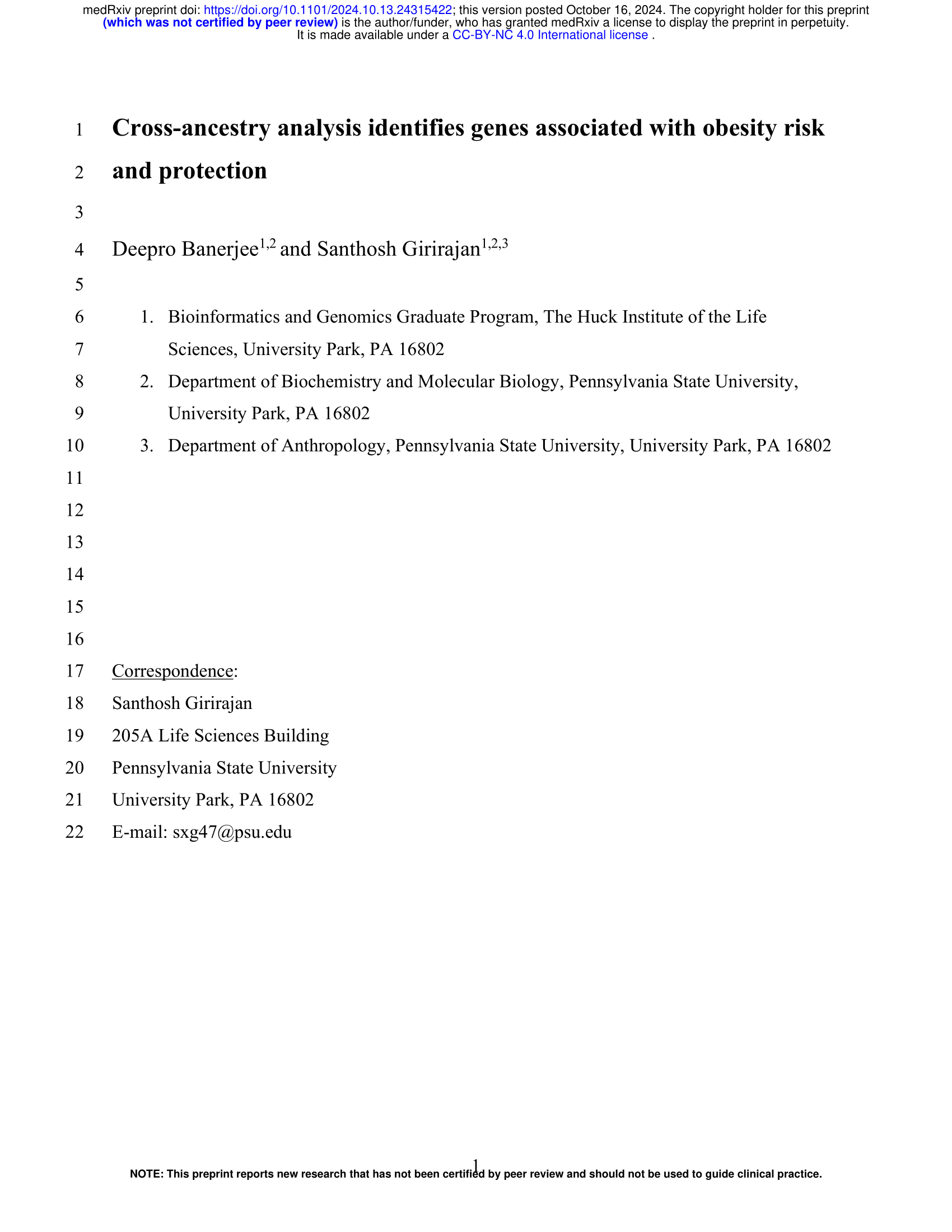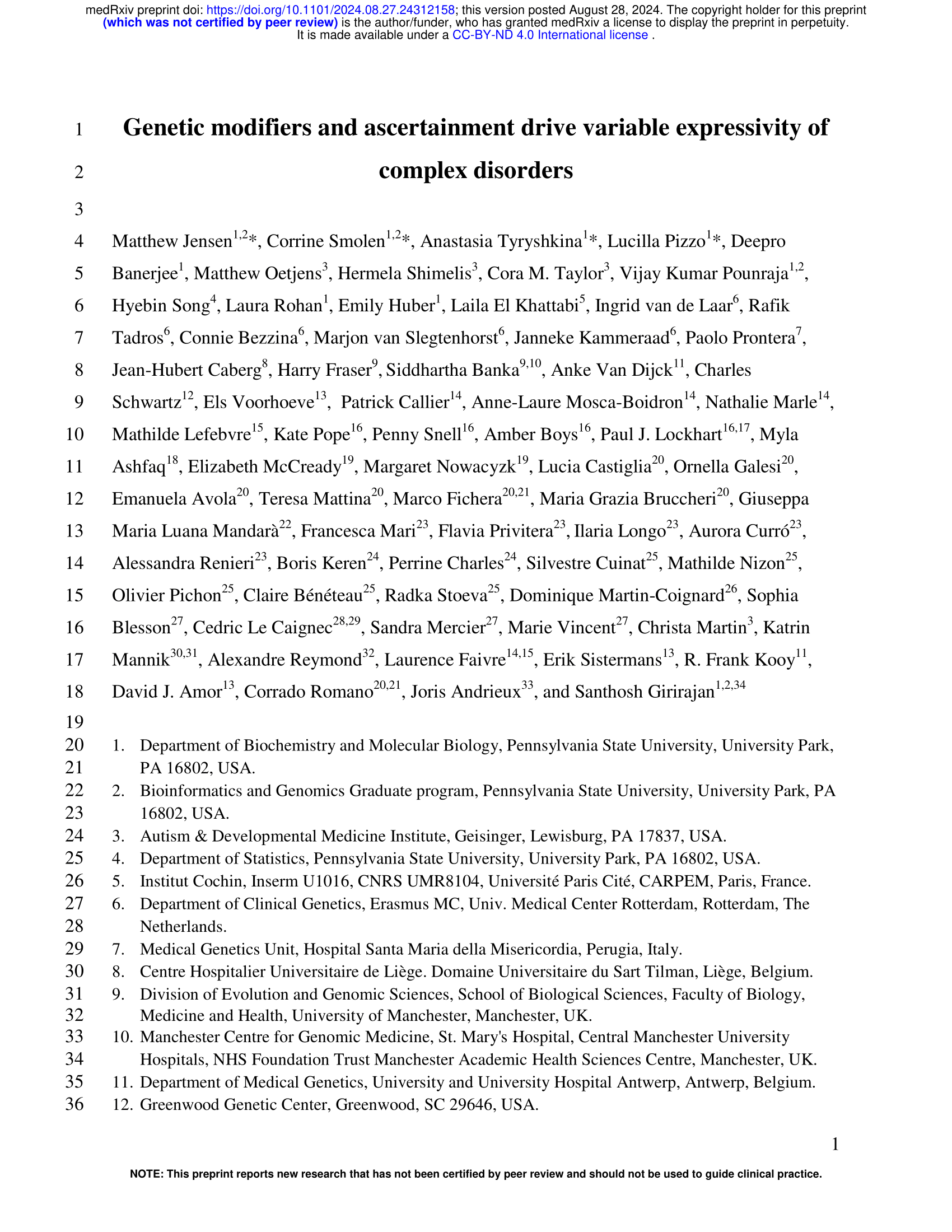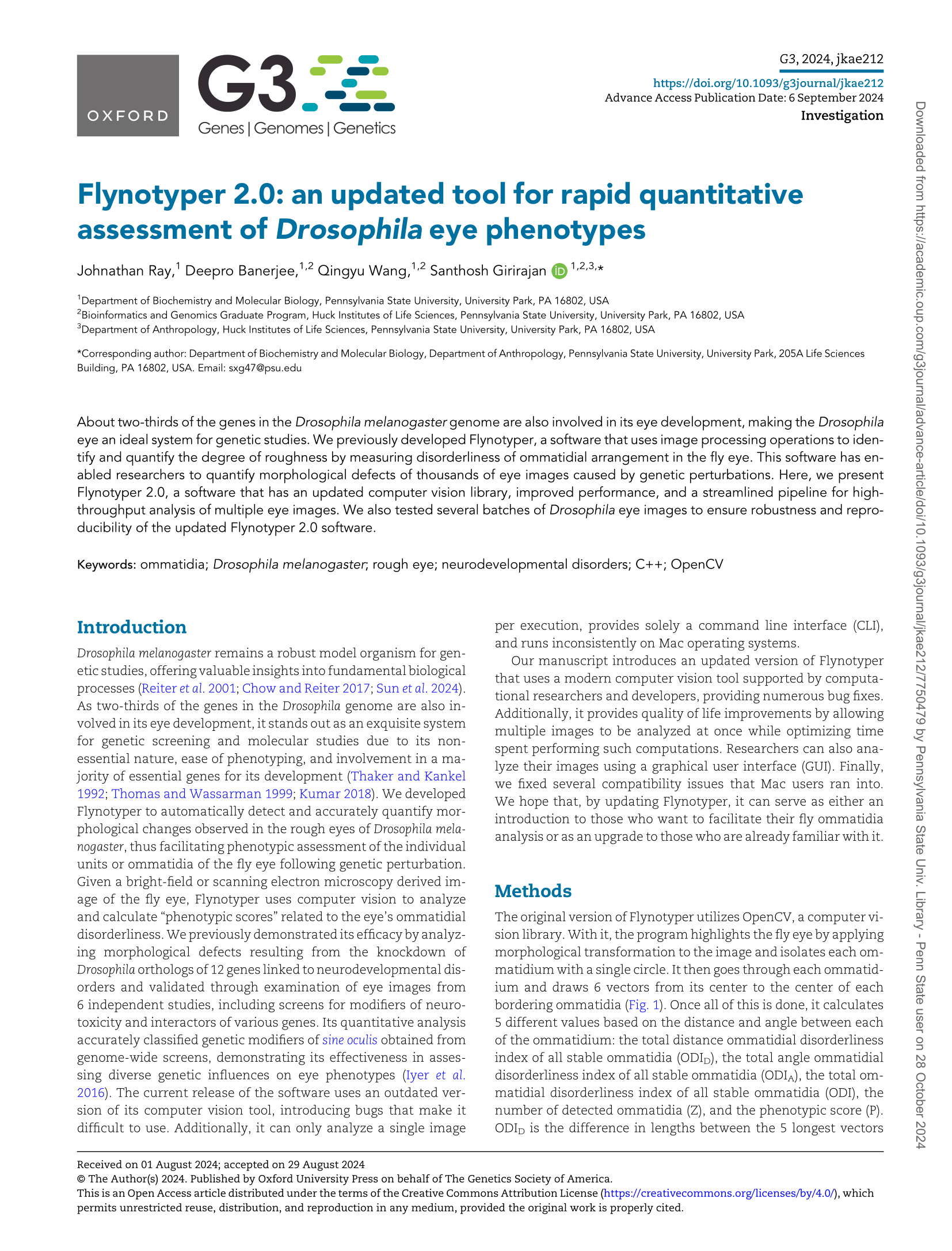
Discovery of novel obesity genes through cross-ancestry analysis
Banerjee D, Girirajan S*.
Gene discoveries in obesity have largely relied on homogeneous populations, limiting their generalizability across ancestries. We performed a gene-based rare variant association study of BMI on 839,110 individuals from six ancestries across two population-scale biobanks. A cross-ancestry meta-analysis identified 13 genes, including five novel ones: YLPM1, RIF1, GIGYF1, SLC5A3, and GRM7, that conferred about three-fold risk for severe obesity, were expressed in the brain and adipose tissue, and were linked to obesity traits such as body-fat percentage. While YLPM1, MC4R, and SLTM showed consistent effects, GRM7 and APBA1 showed significant ancestral heterogeneity. Polygenic risk additively increased obesity penetrance, and phenome-wide studies identified additional associations, including YLPM1 with altered mental status. These genes also influenced cardiometabolic comorbidities, including GIGYF1 and SLTM towards type 2 diabetes with or without BMI as a mediator, and altered levels of plasma proteins, such as LECT2 and NCAN, which in turn affected BMI. Our findings provide insights into the genetic basis of obesity and its related comorbidities across ancestries and ascertainments.
Banerjee D, Girirajan S*.
Gene discoveries in obesity have largely relied on homogeneous populations, limiting their generalizability across ancestries. We performed a gene-based rare variant association study of BMI on 839,110 individuals from six ancestries across two population-scale biobanks. A cross-ancestry meta-analysis identified 13 genes, including five novel ones: YLPM1, RIF1, GIGYF1, SLC5A3, and GRM7, that conferred about three-fold risk for severe obesity, were expressed in the brain and adipose tissue, and were linked to obesity traits such as body-fat percentage. While YLPM1, MC4R, and SLTM showed consistent effects, GRM7 and APBA1 showed significant ancestral heterogeneity. Polygenic risk additively increased obesity penetrance, and phenome-wide studies identified additional associations, including YLPM1 with altered mental status. These genes also influenced cardiometabolic comorbidities, including GIGYF1 and SLTM towards type 2 diabetes with or without BMI as a mediator, and altered levels of plasma proteins, such as LECT2 and NCAN, which in turn affected BMI. Our findings provide insights into the genetic basis of obesity and its related comorbidities across ancestries and ascertainments.


